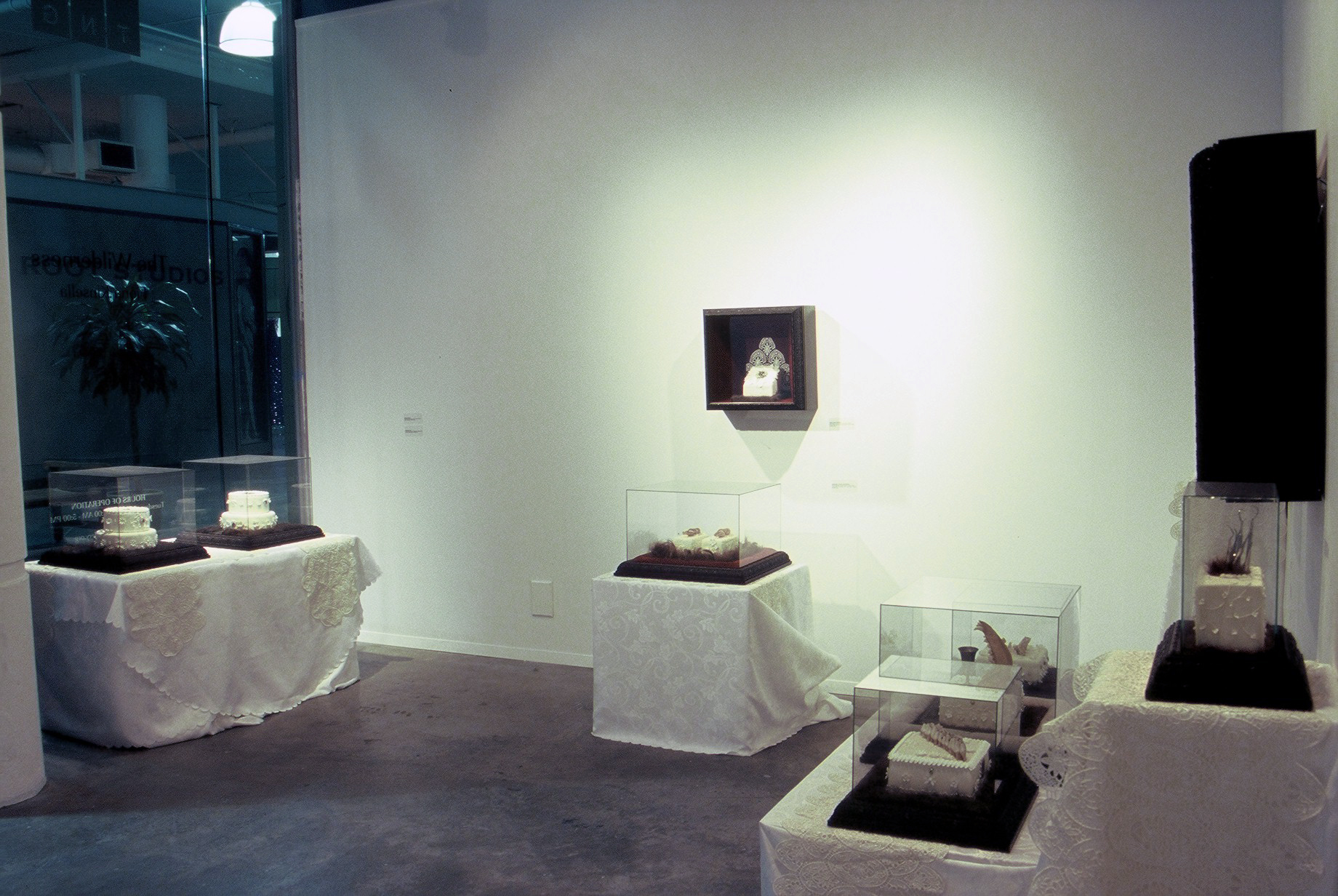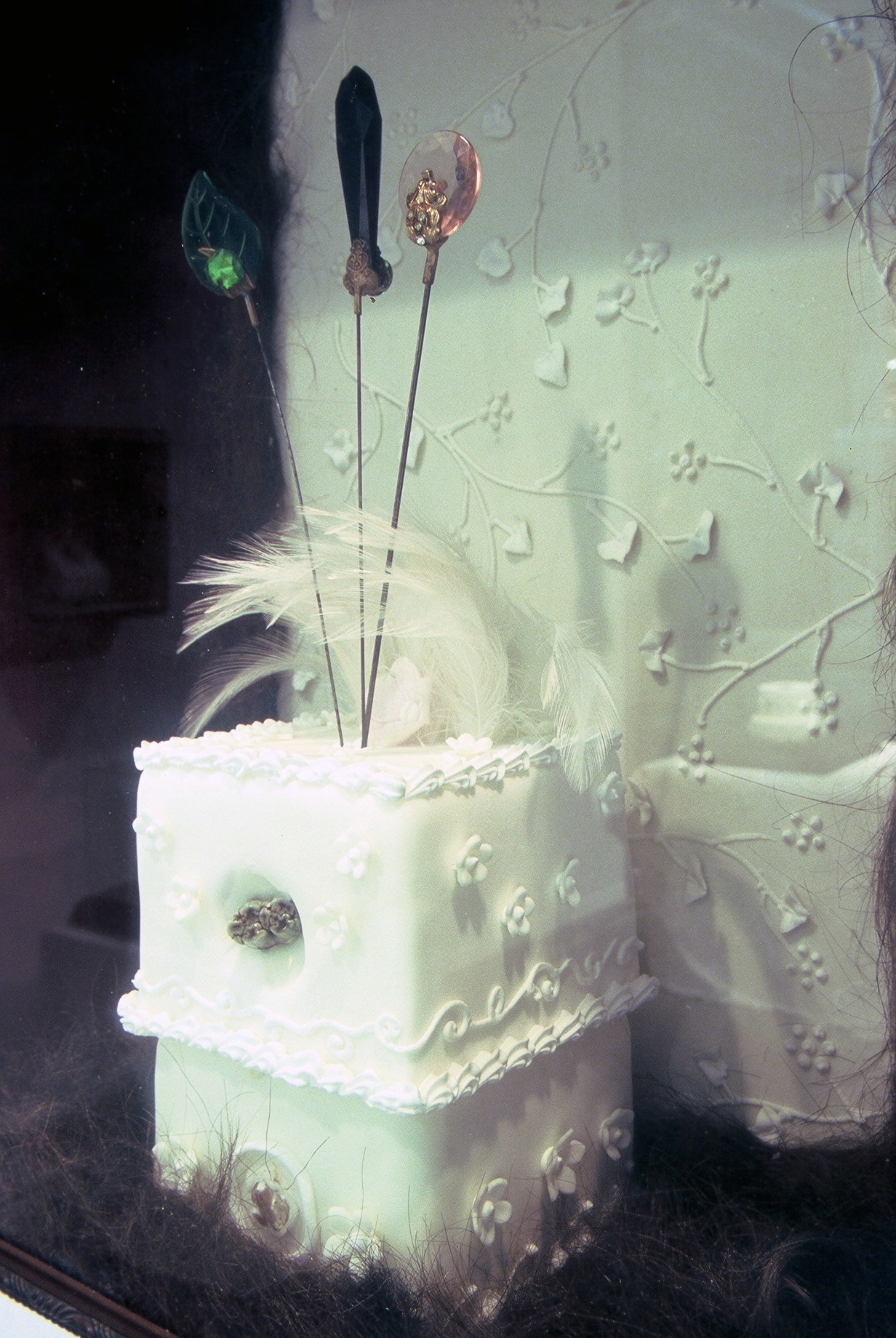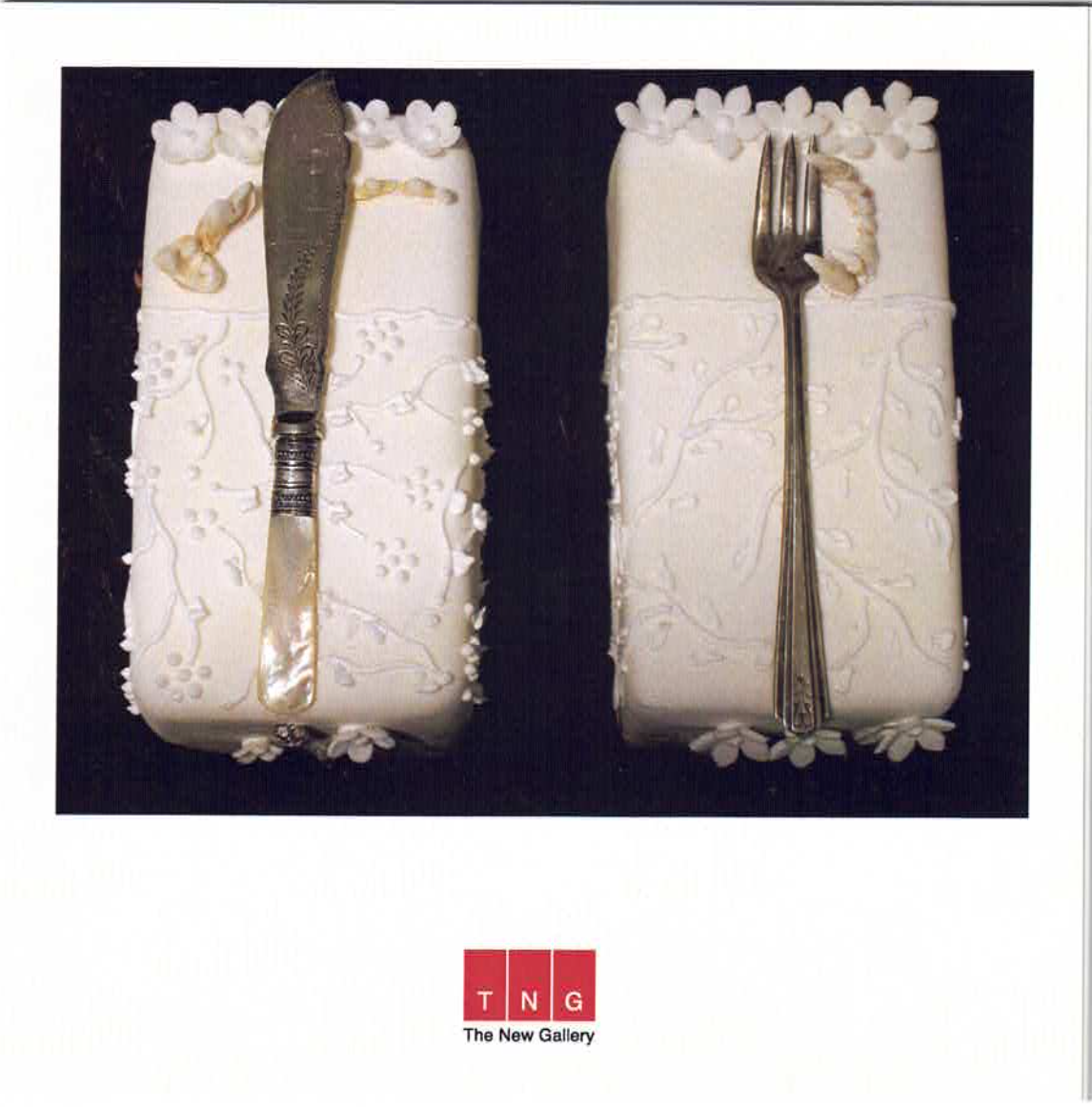
The Wilderness
Fiona Kinsella
November 16 - December 22, 2007












Fiona Kinsella: The Wilderness
We shall not cease from exploration
And the end of all our exploring
Will be to arrive where we started
And know the place for the first time.
-T.S. Eliot, Four Quartets
In this new body of work, Hamilton artist Fiona Kinsella invites us to explore our psychological geographies. Like a book or poem, her intricate creations build a fiction that can lead us away from the everyday. By mixing together elements of history and memory, Kinsella’s work opens up possibilities for moments of epiphany.
Kinsella’s cakes may not be edible, but they are meant for consumption and the act of ingesting them brings intense emotions to the fore. The ingredients can perhaps be read as a map of Kinsella’s own experiences, gathering objects and generating memories over time and through many different landscapes. But the components - as ethereal as fingerprints and as tangible and indestructible as teeth - reference universal rituals we can all recognize: birth, death, love, loss and decay. The media lists that accompany the works read like sublime recipes; the combination of sweetness and duress, literally sugar and tears, suggest joy and heartbreak in a simultaneous instant. In these impossible combinations, Kinsella beckons us toward the uncomfortable challenge of the unfamiliar. Here, in the wilderness of the unknown, lies the possibility of finding truth in the form of our own unadulterated, unmediated reactions.
Like relics of saints and martyrs, the objects Kinsella displays so meticulously, so reverently, act as touchstones to a spiritual realm. And just as patrons sought out the remains of the holy, venturing out to look at art, Kinsella reminds us, is a different kind of pilgrimage with its own vital historical tradition. In the 19th century, the Grand Tour was a rite of passage that brought people into confrontation with the great art of Europe, and in particular of Italy. The French author Stendhal wrote about his own experiences in Florence in 1817, where the art he saw elicited a dizzying confusion, a quickening heart - an intense psychosomatic reaction that would later be called the Stendhal Syndrome. Cases continue to be documented - my mother fainted the first time she saw Michelangelo’s David - and this necessarily spontaneous confrontation has become the holy grail of cultural tourism. Today, however, the sheer volume of visual culture can be overwhelming. The culture of consumption, of buying, eating, looking, and generally taking in as nauseam, can make us feel oversaturated: sick after eating the whole cake. Kinsella’s delicately curious work makes reference to this reality, but it also brings us back to a quieter moment, and offers the chance of escaping into a past, a memory, a fantasy or a simple captivation.
The title of the series is a conscious echo of the iconic Canadian landscapes by the Group of Seven, art that brought us into proximity of a literal wilderness. The journey Kinsella offers, though, is into the mind: an exploration that can bring us out and back again, to a new place.
- Sara Knelman
Sara Knelman is the Curator of Contemporary Art at the Art Gallery of Hamilton.
Fiona Kinsella is a mixed media artist and painter. Kinsella’s work has been exhibited across Canada and in the United States. Manuscript sources indicate that the Irish name Cinnsealach, (later anglicized to Kinsella), first came into being in the year 365 AD. The meaning of the name has various interpretations that include: blood stained forehead; foul laugh, vile chieftain; and chief warrior.
